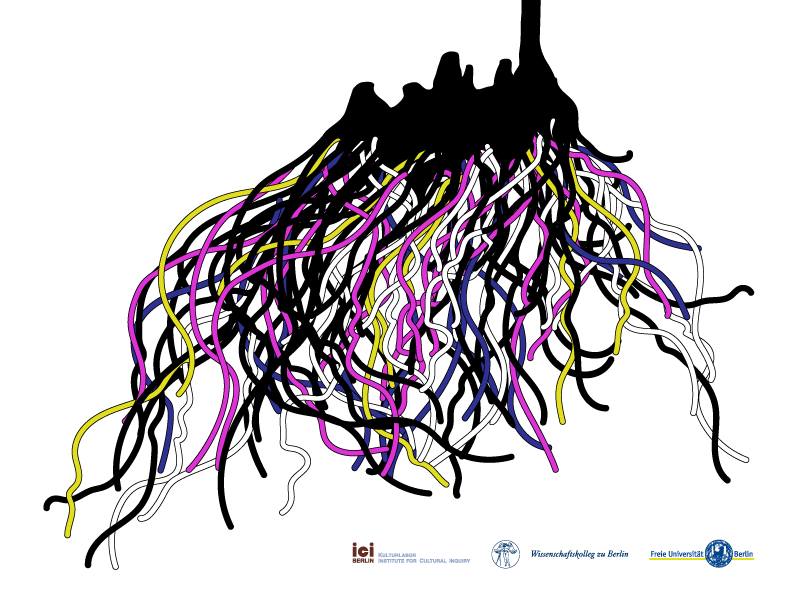Background
In this symposium, we seek to explore how public space changes under the conditions of late modernity, and in what ways language use is both implicated in and affected by such forms of social and cultural change. Embracing a broad discourse-linguistic perspective, it is our aim to gain a better understanding of public space and language use in contemporary globalised societies, and of the ontology of publicness in general – which implies a deeper understanding of the role of discourse and language in late modernity.
In more recent theories, public spheres are increasingly and more explicitly described as constituted through public discourse rather than through the emergence of the bourgeoisie, as in the Habermasian approach (Habermas 1962). Hauser (1999), for example, suggests a theory of public spheres that are centered on discursive practices and are made up of “Vernacular Voices” (Hauser 1999). Gardiner (2004) questions the focus on orderly, rational communication among the bourgeois elites that Habermas observes. Instead, he puts forward a theory of Wild Publics that are not orderly and uniform, but polyphonous and transgressive, diverse and multilingual. This focus on discursive pluralism, which inspires the title of the conference proposed here, has been taken up by scholars of mobile communication (e.g. Deumert 2014), as it seems particularly well-fitted to interpret the publics of late modernity.
For contemporary societies, there is a bundle of factors that have led to substantial, and sometimes drastic, changes in the way public spaces are discursively constituted. Thus the dynamics of globalization (Blommaert 2010) and superdiversity (Blommaert and Rampton 2011) have led to the public visibility of discourses that are increasingly fractured and heterogeneous. Under the effects of late capitalism (Heller 2010), many urban spaces that were traditionally conceived as commons, such as squares and parks, become increasingly privatized and commodified, which in turn leads to new forms of linguistic inclusion and exclusion. And maybe most tangibly, the rise and almost pervasive spread of digital communication has reshaped our understanding of the very ontology of publicness: we are witness to the emergence of a “digital public sphere” (Deumert 2014) which allows for new forms of public interaction that are not fully understood and theorized yet, and which leads to reconfigurations of how linguistic authority is allocated and contested.
In sum, the conditions of public language in late modernity (Rampton 2006) lead to changed and changing notions of public space: new spaces emerge; existing spaces become reconfigured and gain in complexity. Old divisions of private and public are shaken up, and existing forms of discursive authority and power relations are changed. We suggest that this can be observed in discourses and language uses as they manifests themselves in public space. By bringing together experts from different fields of linguistics, language and discourse-oriented study, we will address questions such as the following:
- How are public spaces constituted linguistically?
- Which changes do we observe in the way people act / speak / write in public?
- Who is allowed to speak, and how is linguistic authority granted and contested?
- What are taboos in public?
- How are borders between public and private negotiated and reconfigured?
- How do ‘new’ and ‘old’ publics converge, especially with regard to digital practice?
- What is the relationship of language and territorial space in different forms of publicness?
- What is the role of linguistic expertise in these different public spaces?
- Who has authority over language, and on which grounds does it emerge?
- How are truth claims constructed in the context of eroding public authorities?
In order to tackle the complex and encompassing question of language and public space in late modernity, we present four panels:
Authority over language – new debates and discourses: Discourses of language standardization and anti-standardization under late modern conditions.
Converging media and materialities: Convergences between private/public, discursive/material, online/offline contexts that allow for new discursive relationships and visibilities.
Contested elites and counter discourses: Discursive constructions of elite and authoritative positions (e.g. in journalism, advertising and urban administration) and how they are either undermined or reinforced.
Governing digital public space: New affordances enabled by digital media that question assumptions regarding publicness, social practice and linguistic action.
References
Blommaert, Jan. 2010. The Sociolinguistics of Globalization. Cambridge: Cambridge University Press.
Blommaert, Jan and Ben Rampton. 2011. Language and superdiversity. Diversities 13(2): 1-21.
Deumert, Ana. 2014. Sociolinguistics and Mobile Communication. Edinburgh: Edinburgh University Press.
Gardiner, Michael. 2004. Wild publics and grotesque symposiums: Habermas and Bakhtin on dialogue, everyday life and the public sphere. The Sociological Review 52(1): 28–48.
Habermas, Jürgen. 1962. Strukturwandel der Öffentlichkeit. [English edition: 1989.] Berlin: Suhrkamp.
Hauser, Gerard. 1999. Vernacular Voices. The Rhetoric of Publics and Public Spheres. Columbia: University of South Carolina Press.
Heller, Monica. 2010. The commodification of language. Annual Review of Anthropology 39: 101-114
Rampton, Ben. 2006. Language in Late Modernity: Interaction in an Urban School. Cambridge: Cambridge University Press.
